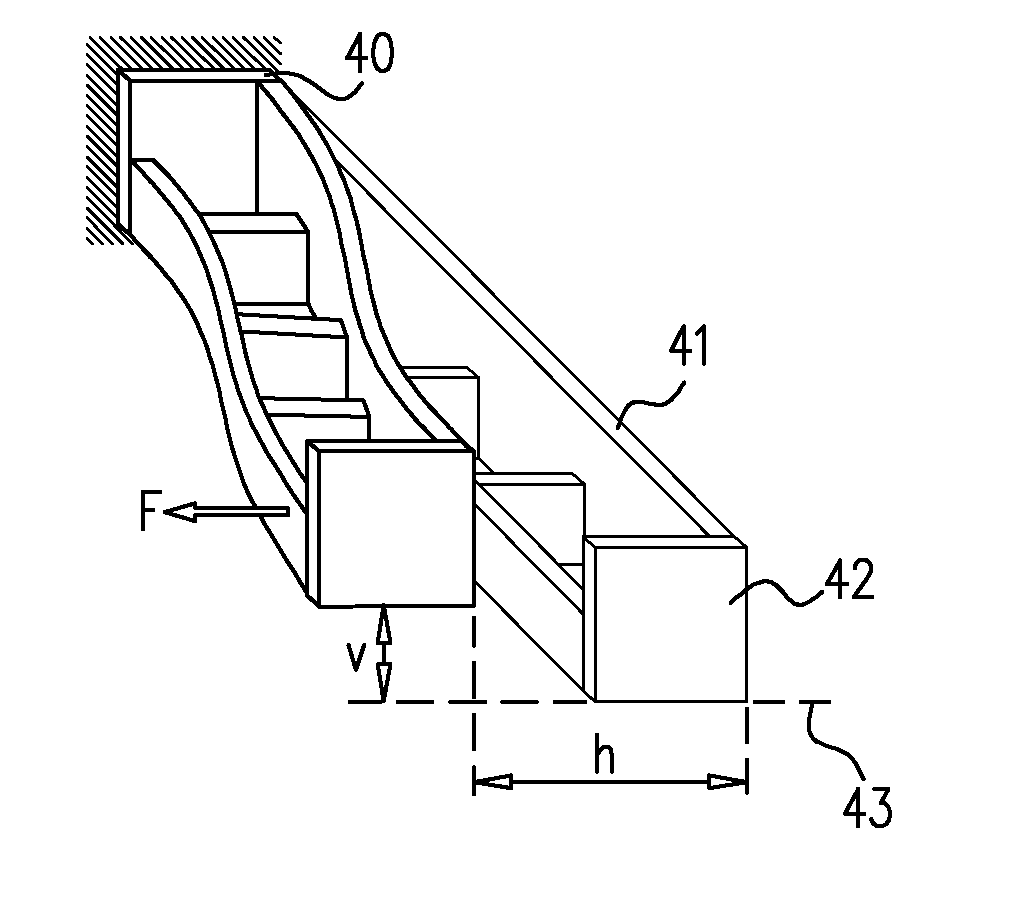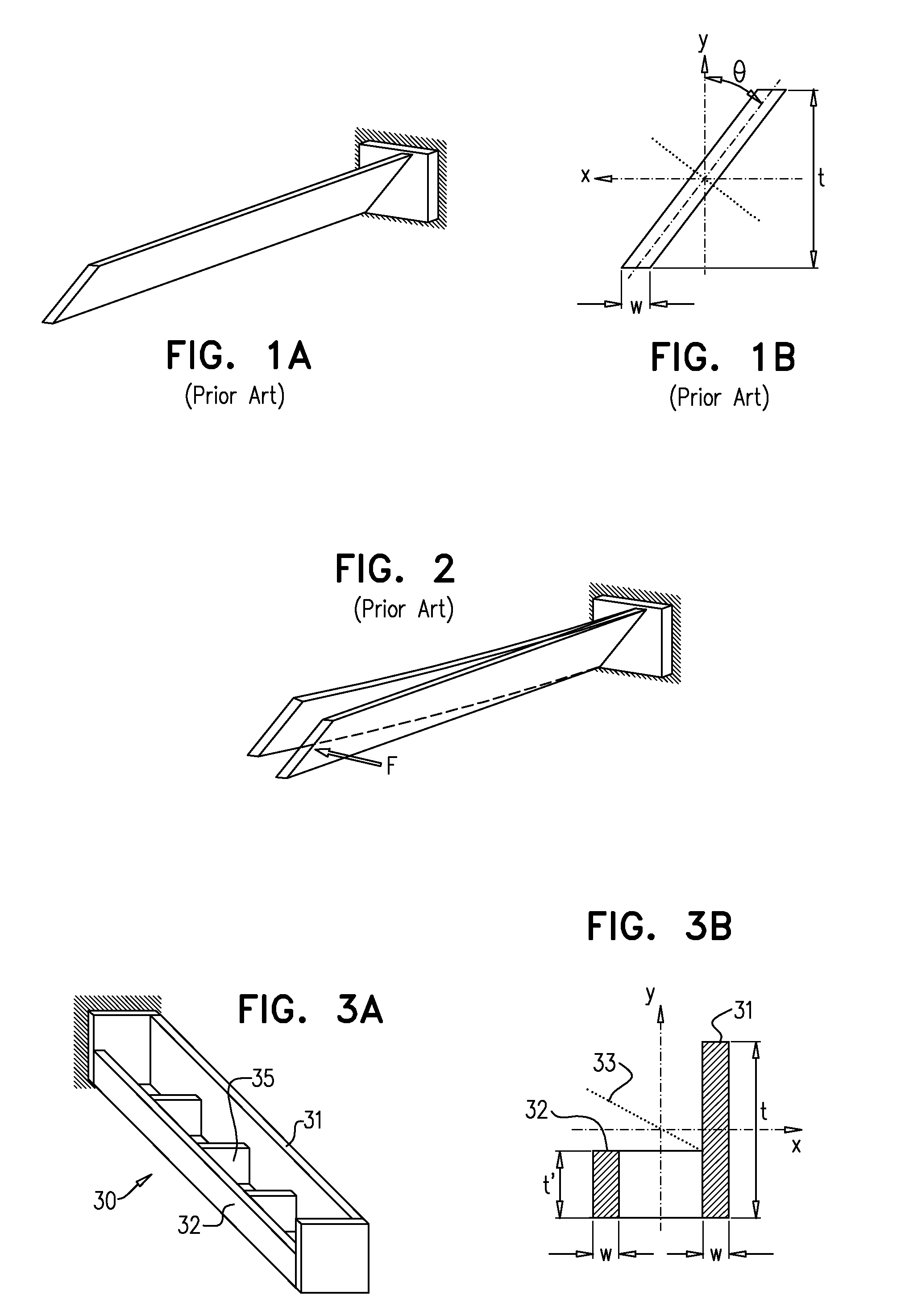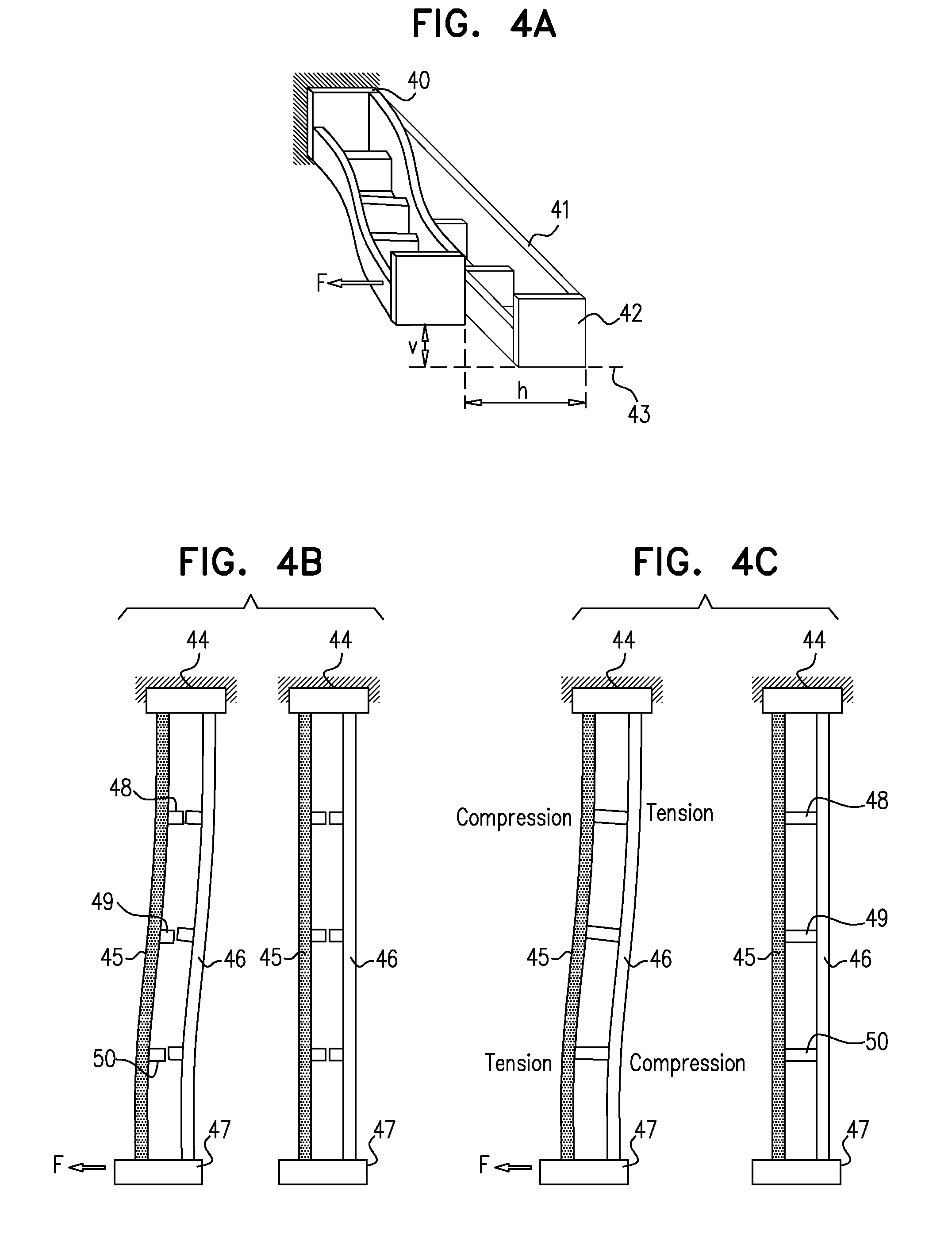Motion conversion mechanisms
a technology of motion conversion mechanism and microelectromechanical system, which is applied in the direction of microstructural technology, electrical apparatus, and piezoelectric/electrostrictive devices, etc., can solve the problems of complex motion patterns, incompatibility with parallel mass fabrication of large numbers of devices on a single wafer, and inability to easily and accurately control the above described beam structure. , to achieve the effect of simple structure, easy implementation and high degree of automation
- Summary
- Abstract
- Description
- Claims
- Application Information
AI Technical Summary
Benefits of technology
Problems solved by technology
Method used
Image
Examples
Embodiment Construction
[0034]Reference is now made to FIGS. 3A and 3B, which illustrate an exemplary implementation of a dual-height cantilever double beam structure 30, which enables the generation of a vertical, out-of-plane motion from a force applied to the beam structure in an in-plane direction. FIG. 3A is an isometric view, while FIG. 3B is a cross-sectional view. The structure is significantly less complicated to fabricate than prior art structures designed to achieve this purpose, such as those described in the Background Section of this disclosure. The flexure structure 30 is constructed of two connected parallel beams with two different cross-sectional heights, a beam of greater height 31 and a beam of lesser height 32. For increased convenience and lower cost of fabrication, the height of the taller beam, marked t in FIG. 3B, could be made equal to the thickness of the wafer in which the structure is being fabricated, such that it would require no height reduction, while the height of the othe...
PUM
 Login to View More
Login to View More Abstract
Description
Claims
Application Information
 Login to View More
Login to View More - R&D
- Intellectual Property
- Life Sciences
- Materials
- Tech Scout
- Unparalleled Data Quality
- Higher Quality Content
- 60% Fewer Hallucinations
Browse by: Latest US Patents, China's latest patents, Technical Efficacy Thesaurus, Application Domain, Technology Topic, Popular Technical Reports.
© 2025 PatSnap. All rights reserved.Legal|Privacy policy|Modern Slavery Act Transparency Statement|Sitemap|About US| Contact US: help@patsnap.com



